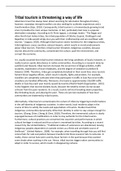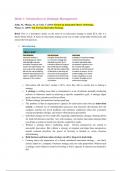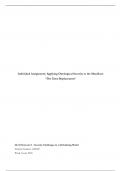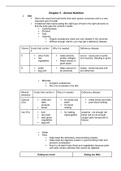Adventure travel has always been about searching for adrenaline throughout history;
however, nowadays intrepid travellers are also seeking for authentic experiences and a
transformation (Sijer, 2018). Consequently, tribal tourism is a tremendously growing trend
since it provides the most unique memories. In fact, particularly East Asia is a popular
destination nowadays. According to Dr Prem Jagyasi, a strategic leader, ‘’The Nagas and
other North East Indian tribes, the tribal population of Odisha, Gujarat, Chattisgarh and
Rajasthan in India would simply stun you with their craftsmanship and are overflown with
tourists.’’ (Jagyasi, 2020). Although tribal tourism seems harmless for the indigenous tribes,
tribal sightseers cause countless colossal impacts, which results in moral predicaments
about tribal tourism. Therefore, tribal tourism threatens indigenous societies, because
tourists disturb the community, contaminate the culture, spoil the environment, and
corrupt the economy.
It is usually assumed that tribal tourism enhances the living conditions of locals; however, in
reality tourism sparks disturbance in native communities. According to a research done by
Lankford and Howard, tribal tourism increases the occurrence of illegal activities, traffic
accidents, exploitation of local inhabitants, and the degree of vandalism (Lankford &
Howard, 1994). Therefore, tribes get completely disturbed in their social lives since tourists
foment these negative effects, which result in deaths, fights and protests. For example,
travellers are completely confused when they participate in traffic in East Asia since traffic
situations are handled differently. Moreover, this leads to approximately 316,000 traffic
deaths in East Asia each year mainly caused by tourists (World Health Organization , 2015).
It also happens that tourists disobey locals, because the wealthy visitors do not accept
criticism from the poor residents. As a result, tourists will start breaking down properties,
discriminating locals, and abusing the poor. These are just two examples of how local
communities are shattered by tribal tourists.
Alternatively, tribal tourism contaminates the culture of tribes by triggering transformations
in the self-identity of indigenous societies. In other words, local residents adapt in the
course of time to satisfy the needs and expectations of tourists. Studies found that
indigenous communities dynamically refine their identity in order to stay unique enough for
tourism. (Chang, Chien, Cheng, & Chen, 2018). Therefore, the immemorial culture is slowly
expunged because of modifications in order to stay authentic for the tribal tourists.
Furthermore, cultural practices are converted into souvenirs and performances in which
cultural heritage is reduced and thus culture is monetized by tribes. According to a recent
research by the United Nations, ‘’Traditional modes of sustenance are abandoned, leaving
indigenous peoples dependent on outside visitors as a fickle and unreliable source of
livelihood.’’ (United Nations , 2009). For example, when travelling through Asia you will find
conical hats for sale everywhere because travellers link these souvenir hats to samurais. In
reality, those conical hats were used by Asian farmers in the past because they wanted
some shade when working in the sun. Hence, tribal tourists trigger native communities to
adapt in order to survive, which results in disappearing cultures.












